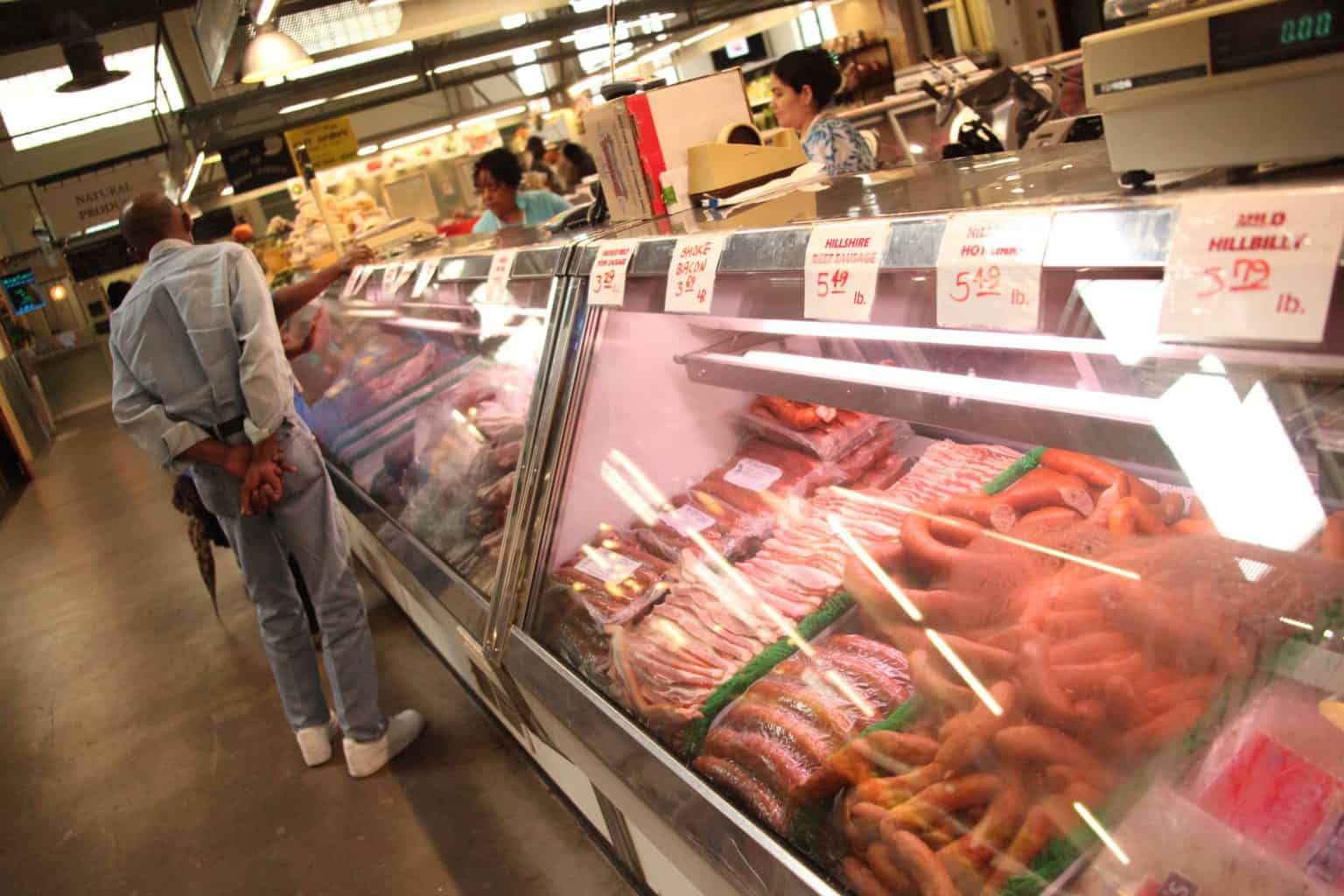Visit Bagley Meat Market Edwardsville IL for custom cuts and high-quality meats.
Visit Bagley Meat Market Edwardsville IL for custom cuts and high-quality meats.
Blog Article
How to Pick the Perfect Cut of Meat From a Trusted Meat Market
Selecting the optimal cut of meat from a relied on meat market requires a thoughtful method that stabilizes top quality, culinary purpose, and budget plan. Comprehending the numerous types of meat and their respective cuts is necessary, as is involving with your butcher to gain insights into sourcing and preparation.
Comprehending Meat Cuts


As an example, the tenderloin is treasured for its buttery texture and minimal connective cells, making it excellent for fast food preparation methods such as barbecuing or pan-searing. In comparison, harder cuts like the brisket or shank gain from sluggish food preparation techniques to damage down collagen, yielding rich and tasty outcomes.
Furthermore, the fat web content of a cut plays an essential role in taste profile and wetness retention throughout cooking. Cuts with greater fat content, such as ribeye, use an even more robust taste, while leaner options, like sirloin, may call for careful prep work to avoid dryness (bagley meat market edwardsville il). Recognizing these nuances enables informed options that boost culinary productions, guaranteeing that each recipe showcases the finest high qualities of the chosen meat
Aspects to Think About
When choosing the excellent cut of meat, several important factors enter play that can significantly affect the last recipe. Consider the type of meat you prefer-- beef, pork, lamb, or chicken-- as each deals one-of-a-kind flavors and structures. The certain cut within that group is equally crucial; for circumstances, ribeye supplies abundant marbling, while tenderloin gives a lean, buttery appearance.
An additional factor is the cooking method you plan to use. Cuts suitable for grilling, such as T-bones or sirloins, differ from those better suited for slow food preparation, like chuck roasts or shanks. Additionally, quality is vital; constantly choose meat with a vivid shade and firm appearance, signifying top quality and appropriate handling.
Furthermore, consider the resource of the meat. A relied on meat market commonly supplies in your area sourced, hormone-free, and grass-fed choices, which can improve taste and dietary value. Your spending plan will assist your choice. Premium cuts may provide outstanding preference, but there are likewise cost-effective options that, when prepared correctly, can yield scrumptious outcomes. Balancing these variables will aid you select the best cut for your culinary demands.
Concerns to Ask Your Butcher
A butcher's competence can be invaluable when choosing the suitable cut of meat for your culinary undertakings. Begin by making inquiries concerning the source of the meat.
Next, inquire about the various cuts Source offered for the kind of meat you prefer. An experienced butcher will certainly discuss the nuances of each cut, helping you pick one that matches your cooking method and desired result. Don't wait to ask about the most effective food preparation strategies for a particular cut; butchers usually have pointers that can boost your meal.
It's also sensible to ask concerning the meat's quality. Inquire concerning the shipment timetable and how commonly the meat is replenished. This will certainly provide you self-confidence in the high quality of what you are purchasing. Ask for suggestions based on your personal taste choices. A great butcher will certainly be excited to share their know-how and suggest cuts that will delight your palate. Engaging your butcher with these inquiries can significantly boost your meat selection experience.
Acknowledging Quality Meat

Appearance is one more important aspect; high quality meat should feel firm and a little springy to the touch. Stay clear of any kind of cuts that really feel slimy or exceedingly completely dry, as these can indicate wasting or inappropriate storage. Additionally, scent plays an important function; fresh meat ought to have a tidy, neutral fragrance, while any repulsive or sour smells are red flags.
Last but not least, here are the findings consider the resource. Buying from a reputable meat market, where the meat's beginning is recognized, can ensure better requirements. By concentrating on these indicators-- color, marbling, texture, scent, and source-- you can with confidence pick cuts that will boost your food preparation and dining experience.
Cooking Techniques for each and every Cut
Choosing the right food preparation technique is paramount for taking full advantage of the flavor and tenderness of each cut of meat. Various cuts possess special characteristics that determine the most appropriate food preparation techniques.
For tender cuts, such as filet mignon or ribeye, dry warmth methods like grilling, broiling, or pan-searing are suitable. These methods improve the natural flavors while guaranteeing a juicy, succulent texture. Alternatively, tougher cuts, such as chuck or brisket, benefit from wet warm methods, including braising or slow food preparation. These methods assist break down connective tissues, resulting in a tender, tasty recipe.
Pork chops and hen busts are versatile and can be cooked using both dry and wet approaches. While cooking or roasting can generate scrumptious outcomes, poaching or sautéing can keep wetness and inflammation. For lamb, approaches like toasting or braising are recommended, as they complement the meat's robust flavor.

Verdict
To conclude, picking the ideal cut of meat from a trusted meat market demands a comprehensive understanding of meat cuts and consideration of different aspects, consisting of source, high quality, and food preparation approaches. Involving with the butcher via targeted queries can produce beneficial insights and referrals customized to details cooking needs. Focusing on both quality and spending plan will improve the total gastronomic experience, making sure that official website the chosen cut fulfills assumptions in both flavor and preparation.
Report this page